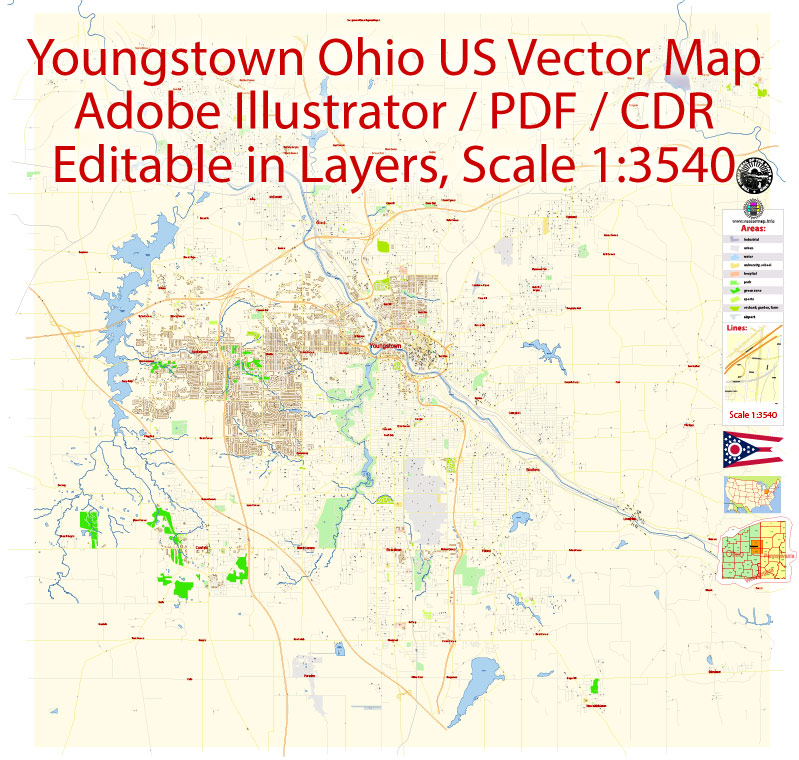Youngstown, Ohio, has a rich history of urban development that mirrors the broader economic and industrial shifts in the United States. Here’s a brief overview:
- Early Development:
- Youngstown’s history dates back to the late 18th century when it was first settled by European pioneers. The city’s growth was initially driven by agriculture and the proximity of the Mahoning River, which provided water power for mills.
- Industrialization and Steel Industry:
- The late 19th and early 20th centuries marked a significant turning point for Youngstown with the rise of the steel industry. The city became a major player in the production of iron and steel, attracting waves of immigrants seeking employment in the mills.
- Economic Boom:
- During the early to mid-20th century, Youngstown experienced an economic boom fueled by the steel industry. The city’s population surged, and it became a symbol of industrial prosperity. This period saw the development of vibrant neighborhoods, commercial districts, and cultural institutions.
- Labor Movement:
- The prosperity of Youngstown was often accompanied by labor conflicts. The city became a focal point for the labor movement, with steelworkers actively participating in strikes and demonstrations to advocate for better working conditions and wages.
- Deindustrialization:
- The latter half of the 20th century brought challenges to Youngstown as the steel industry declined. Deindustrialization hit the city hard, leading to massive job losses and population decline. The closure of steel mills in the late 1970s and early 1980s had a profound impact on the city’s economy and urban landscape.
- Urban Decline and Challenges:
- With the decline of the steel industry, Youngstown faced urban decay, high unemployment rates, and a shrinking tax base. Abandoned industrial sites and vacant houses became common, and the city struggled with issues such as crime and poverty.
- Revitalization Efforts:
- In recent years, Youngstown has made efforts to revitalize and diversify its economy. The city has focused on attracting new industries, investing in education and healthcare, and repurposing vacant industrial sites for new uses. Community initiatives and collaborations with local businesses have played a role in these revitalization efforts.
- Education and Cultural Institutions:
- Youngstown is home to educational and cultural institutions, including Youngstown State University. These institutions contribute to the city’s cultural vibrancy and provide opportunities for residents.
- Challenges and Future Prospects:
- Despite revitalization efforts, Youngstown still faces challenges, including economic disparities and the need for continued urban renewal. The city’s future prospects depend on its ability to adapt to a changing economy and address ongoing social and economic issues.
Overall, the history of Youngstown, Ohio, reflects the complex interplay of industrialization, economic shifts, and community resilience that has shaped many cities in the United States.


 Author: Kirill Shrayber, Ph.D.
Author: Kirill Shrayber, Ph.D.